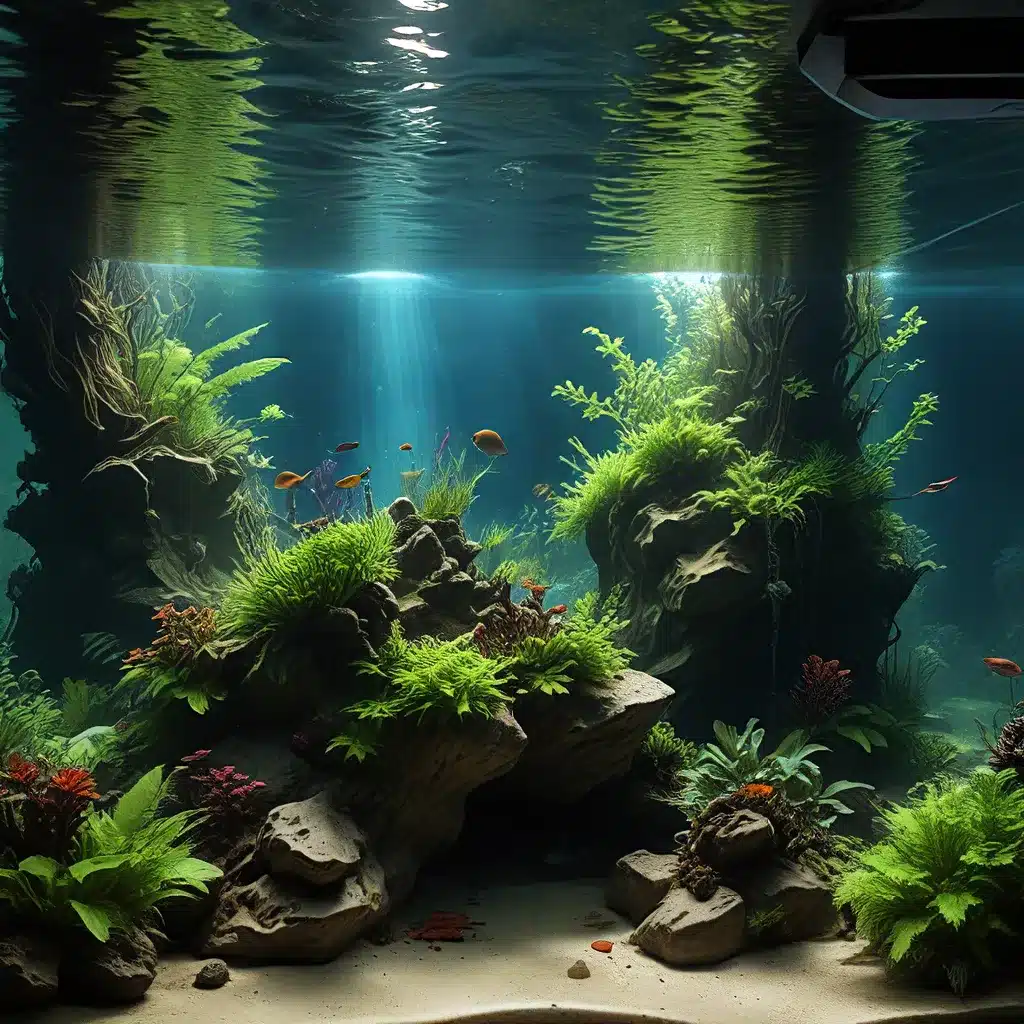
Aquariums have long captivated the imagination of hobbyists and nature enthusiasts alike, offering a window into the vibrant, dynamic world of aquatic life. Aquascaping, the art of crafting submerged landscapes in aquariums, takes this fascination to new heights. By skillfully combining hardscape materials, such as rocks and driftwood, with the strategic planting of aquatic flora, aquascapers can create mesmerizing underwater tableaus that mimic the beauty and complexity of natural ecosystems.
The Foundations of Aquascaping: Hardscape and Substrates
The foundation of any captivating aquascape lies in the thoughtful selection and arrangement of hardscape elements. These non-living components, including rocks, wood, and substrates, serve as the canvas upon which the aquatic garden will unfold. From the rugged textures of Seiryu stone to the organic, sinuous forms of Malaysian driftwood, each hardscape material carries the power to evoke a specific mood or atmosphere within the aquarium.
When positioning these hardscape elements, aquascapers often draw inspiration from the principles of landscape design, such as the rule of thirds and focal points. By strategically placing larger rocks or driftwood formations, they can create a sense of depth and visual interest, guiding the viewer’s gaze through the aquatic scene. Equally crucial is the choice of substrate, which not only contributes to the overall aesthetic but also plays a vital role in supporting the growth and health of aquatic plants.
The Living Canvas: Aquatic Plants and Their Roles
The true heart of any aquascape lies in the vibrant, living aquatic plants that fill the space between the hardscape elements. From the lush, carpeting foreground plants to the towering background species, each plant selection carries a specific purpose in the overall design.
Foreground plants, such as Dwarf Baby Tears and Monte Carlo, create a sense of depth and groundcover, while midground plants like Anubias and Java Fern provide texture and contrast. Background plants, including Vallisneria and Jungle Val, offer a verdant backdrop, swaying gently with the water’s flow and creating the illusion of an expansive, natural landscape.
Integrating dither plants, such as Java Moss, Sagittaria, and Rotala species, can further unify the aquascape, softening the transitions between the various layers and elements. These adaptable, easy-to-care-for plants serve as visual connectors, enhancing the depth and complexity of the underwater scene.
Beyond their aesthetic roles, the strategic placement and selection of aquatic plants also play a crucial ecological part in maintaining the health and stability of the aquarium ecosystem. By understanding the specific light, nutrient, and CO2 requirements of each plant species, aquascapers can cultivate a thriving, balanced community that supports the overall well-being of the aquarium’s inhabitants.
Composition and Design Principles: Crafting Captivating Aquascapes
Effective aquascaping is not merely about arranging plants and hardscape materials; it’s about orchestrating a harmonious symphony of natural elements that captivates the senses. By applying the principles of visual composition, aquascapers can elevate their creations from simple underwater gardens to living masterpieces.
One of the fundamental concepts in aquascaping is the rule of thirds, which involves dividing the aquarium into nine equal parts with two horizontal and two vertical lines. The points where these lines intersect are the prime locations for placing focal points, such as a striking piece of driftwood or a vibrant cluster of plants. This technique ensures a balanced and dynamic composition that is pleasing to the eye.
Another crucial element of aquascaping is layering, wherein the aquascape is structured with distinct foreground, midground, and background elements. This creates a sense of depth and perspective, guiding the viewer’s gaze through the aquatic scene and evoking the illusion of a larger, more expansive environment.
Contrast and harmony also play a vital role in aquascaping composition. By juxtaposing elements of varying textures, colors, and sizes, aquascapers can create visual interest and excitement. However, achieving harmony through the repetition of shapes, colors, or textures is equally important, as it ties the entire aquascape together into a cohesive and visually appealing whole.
The strategic use of negative space, or deliberately leaving open areas within the aquascape, is another key principle. These areas of respite provide a sense of breathing room, allowing each element to stand out and contribute to the overall balance and tranquility of the scene.
Finally, the illusion of movement is a powerful tool in aquascaping composition. By arranging hardscape materials and positioning plants in a way that suggests motion, aquascapers can infuse their creations with a dynamic, lifelike quality, mirroring the natural flow of water in the wild.
The Evolving Nature of Aquascapes: Maintenance and Adaptation
Crafting a captivating aquascape is not a one-time endeavor; it is an ongoing process of nurturing and adapting to the ever-changing ecosystem within the aquarium. Regular maintenance, such as trimming plants, balancing nutrients, and managing light and CO2 levels, is essential to maintain the health and visual appeal of the aquascape.
As the aquatic plants grow and the hardscape elements weather over time, the aquascape’s appearance will inevitably transform. Skilled aquascapers recognize this evolution as an integral part of the creative process, embracing the challenge of adapting their designs to ensure the continued harmony and sustainability of the underwater landscape.
Through this dynamic interplay between the aquarist’s vision and the aquarium’s natural cycles, aquascaping becomes a fulfilling blend of artistic expression and environmental stewardship. By nurturing these miniature ecosystems, aquarists not only captivate the senses but also forge a deeper connection with the natural world, inspiring wonder and appreciation in all who behold their creations.
Immerse yourself in the captivating world of aquascaping and unlock the secrets to crafting your own mesmerizing underwater masterpiece by visiting King Aquarium, your one-stop destination for all your aquarium care and aquascaping needs.

